Founded in 1784, and located in the fertile and strategic Cumberland Valley, Franklin County possesses a rich and unique history. A tour through the National Register of Historic Places in Franklin County offers just a glimpse into the rich history of the county, and also highlights the community’s continued efforts to designate and preserve their unique history.
Historical Marker “Firsts”
Franklin County is home to the Commonwealth’s very first official historical marker.
Erected in 1914, the Fort McCord roadside plaque marks the 1756 location of a violent confrontation between the largely Scots-Irish settlers and Native Americans. The Fort McCord plaque is also noteworthy for its unique design with a large stone Celtic cross, complete with a relief of a thistle; the national flower of Scotland.
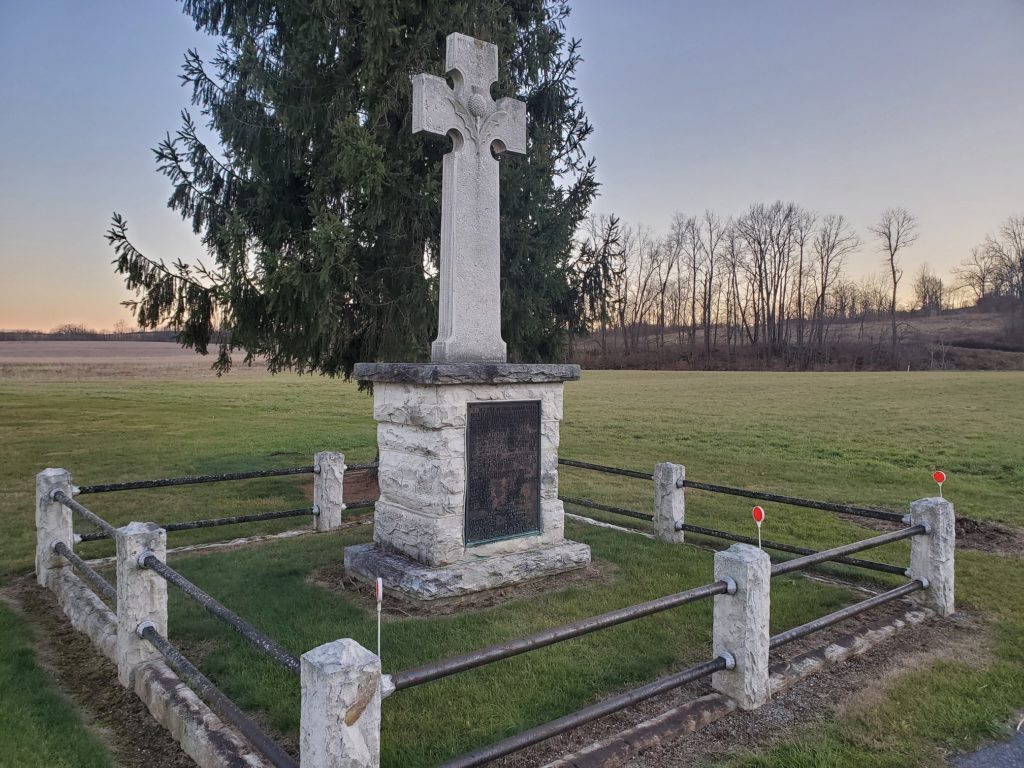
The monument and plaque were installed by the Pennsylvania Historical Commission (predecessor of the PHMC), and a local organization known as the Enoch Brown Park & Monument Association, named in honor of another well-known 18th century Franklin County incident that took place during the height of “Pontiac’s War.”
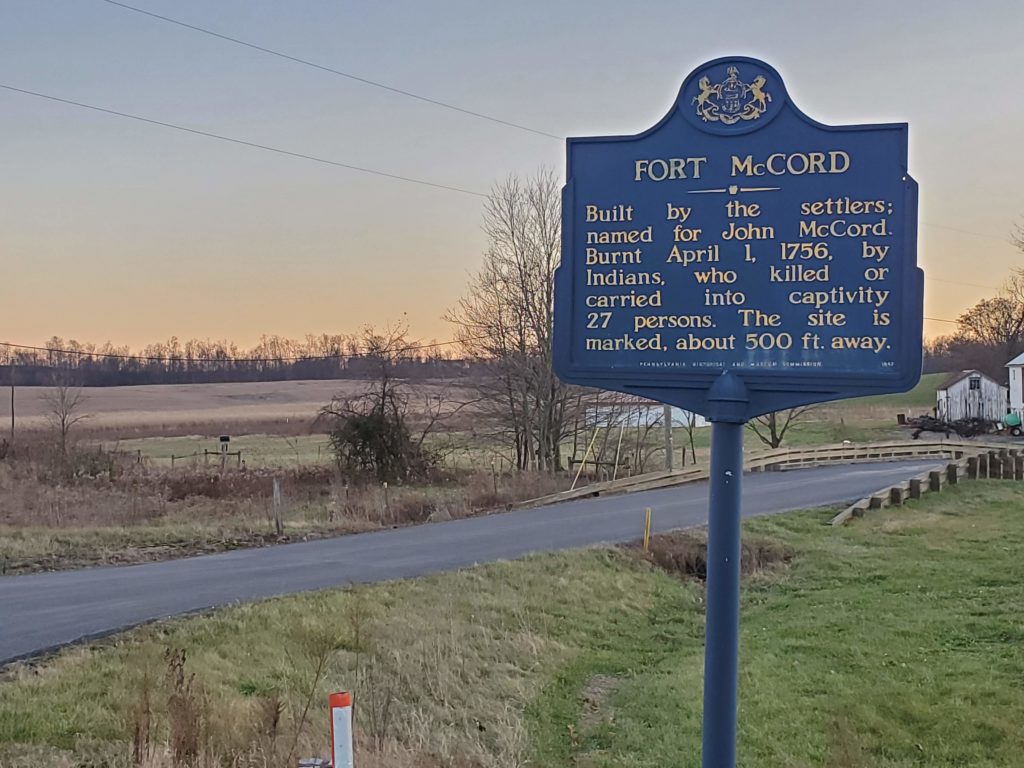
It should be noted that the plaque has been identified by the PHMC in the agency’s ongoing effort “to address plaques and markers that lack historical context, contain inaccuracies, or references that could be perceived as inappropriate.” In 1947, a second blue and gold “roadside” marker was placed 500’ away along a more heavily traveled road.
National Register “Firsts”
Listed in the very early days of the National Register of Historic Places in January of 1970, the old Franklin County Jail was the first locally sponsored Pennsylvania nomination to the National Register.
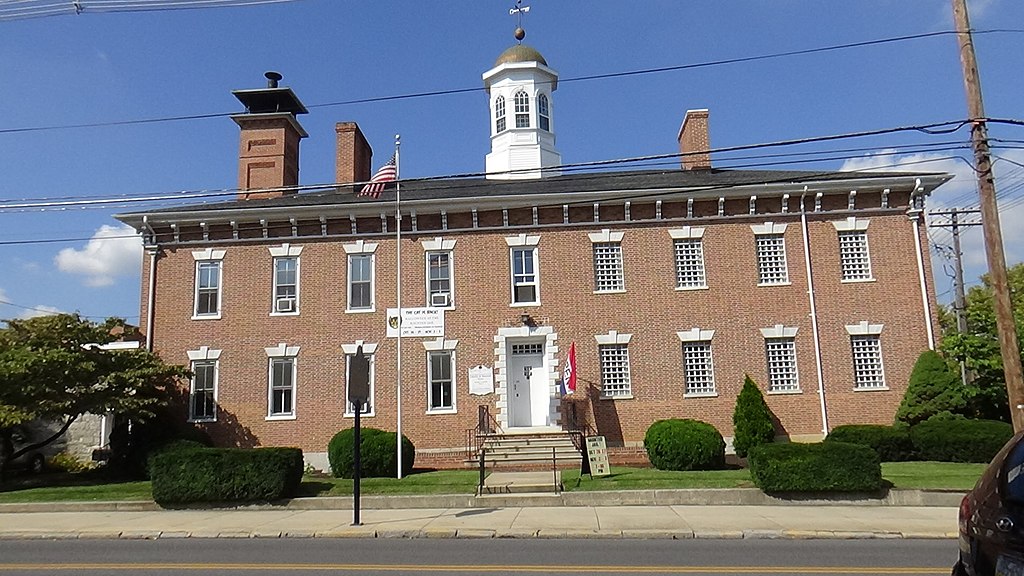
Franklin County Heritage, a local history and preservation organization at the time, worked to research and nominate the 1818 jail building and enclosed yard. The 1970 nomination noted that the jail, which saw minor alterations over the years, was considered, “one of the oldest penal institutions to be used continually as such in the country.” Today, the historic jail is home to the Franklin County Historical Society – Kittochtinny.
On the heels of the old Franklin County Jail, the local group went on to nominate and list other historic sites, such as:
- In March 1970, the John Brown House in Chambersburg, where Brown staged his infamous 1859 Harpers Ferry Raid;
- In January 1974, the 1865 Franklin County Courthouse, built following the devastating burning of Chambersburg by Confederate troops; and
- In September 1975, the 1857 Shank’s Mill in Washington Township.
Bridges
Another early National Register listing in Franklin County is the 1849 Martin’s Mill Covered Bridge.
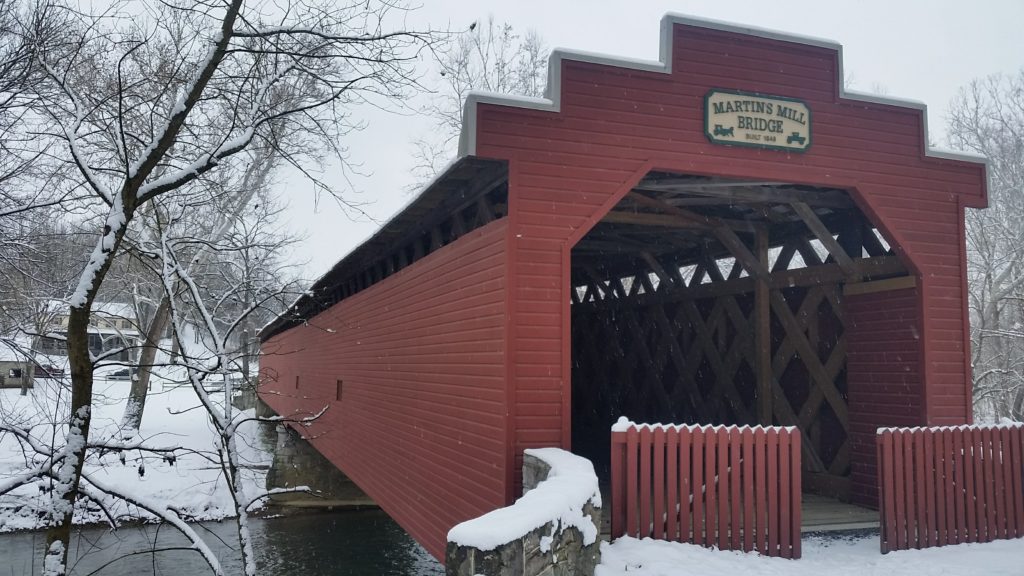
Listed in the National Register in 1975, the bridge, which spans the Conococheague Creek, is significant for its Town lattice truss design, and, at 205 ft., is the second longest covered bridge in Pennsylvania.
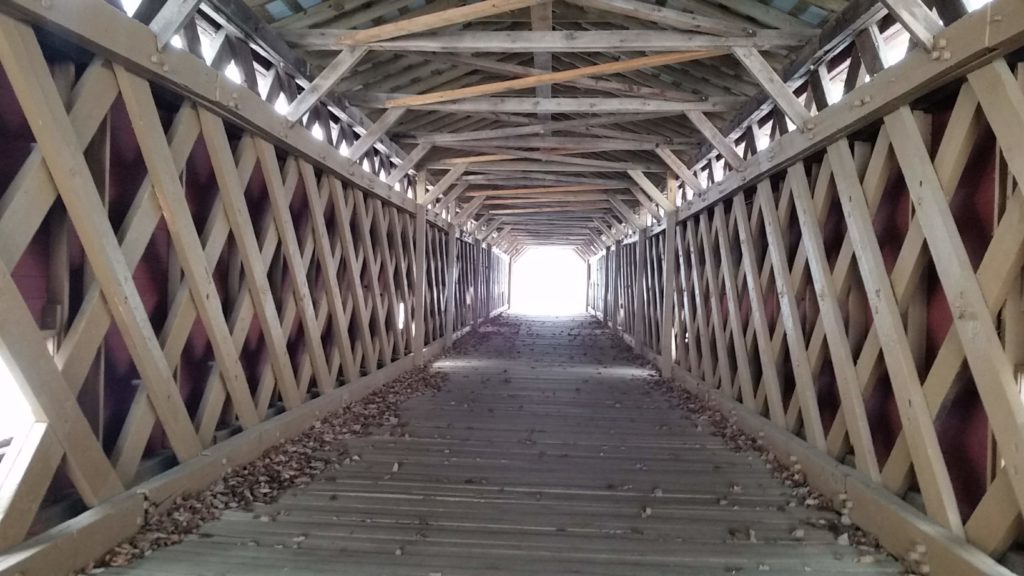
In 1961, after threat of abandonment and demolition, the local Martin’s Mill Covered Bridge Association was founded. The group helped maintain and preserve the bridge regularly over the decades, including a major restoration following the devastating floods following Hurricane Agnes in 1972. Today, the bridge is owned and maintained by Antrim Township as a major feature of their Martins Mill Bridge Park.
There are two other notable bridges in Franklin County. The Maclays Mill Road “twin” bridges, spanning the Conodoguinet Creek, are located in Southampton and Lurgan townships. Both bridges were built in 1827 by local craftsman Silas Henry. They are also recorded in the Historic American Engineering Record (HAER) and were listed in the National Register in 1988.
Built sometime between 1793 – 1824, this Fannettsburg Road bridge is a 3-span rubble stone arch bridge that crosses the west branch of the Conococheague Creek in Metal Twp. It is one of twelve pre-1860 stone arch bridges in the county. It was determined to be eligible for the NR in 2007.
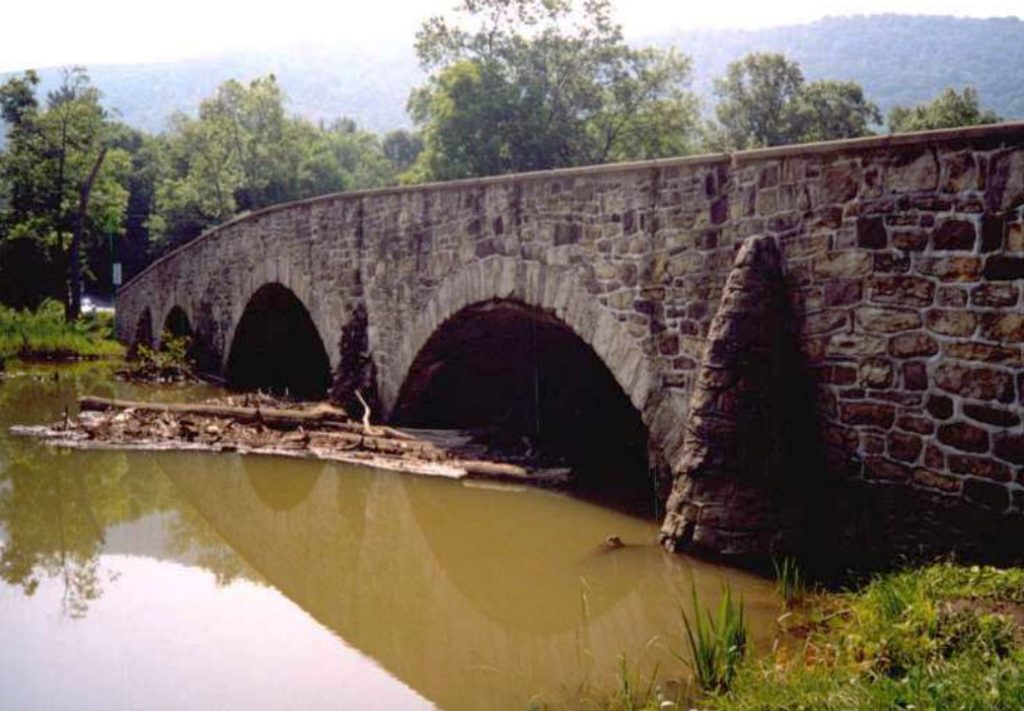
Zion Union Cemetery
In Mercersburg, the Zion Union Cemetery, a historic African American burial ground includes the stories of 17 members of the famed 54th and 55th Massachusetts infantry regiments, as well as 21 other soldiers who served in various units of US Colored Troops (USCT) during the Civil War.
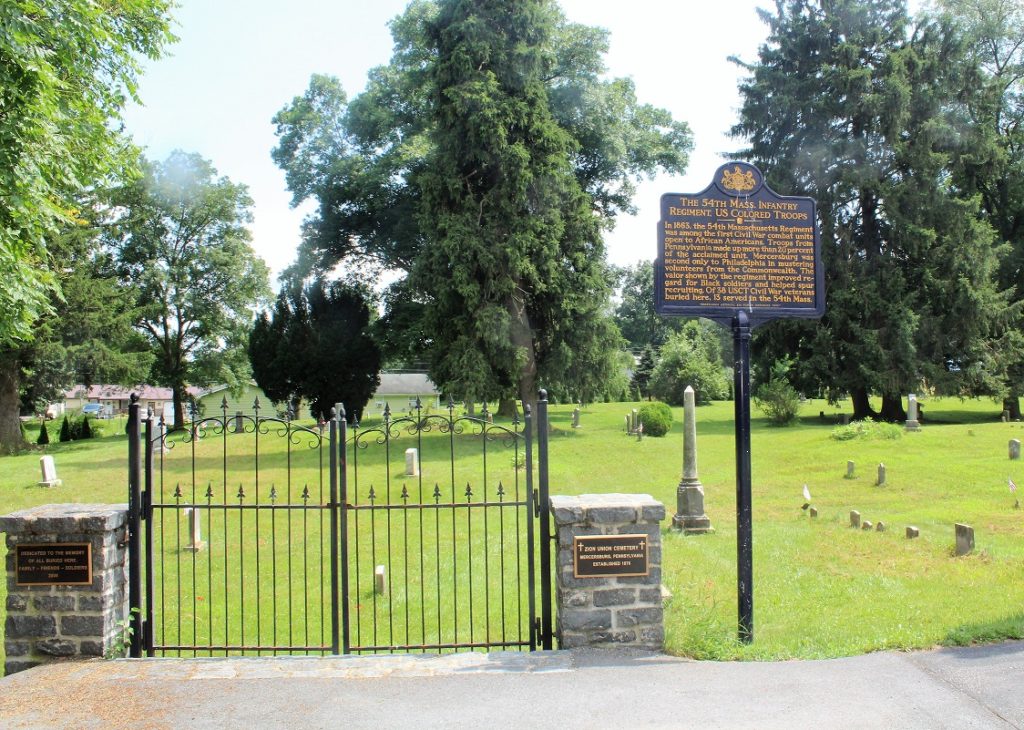
When it comes to the number of Pennsylvania men recruited for the famed Massachusetts regiments, the community of Mercersburg was second only to Philadelphia. Evaluated by the PA SHPO in 1998, the cemetery was determined to be Eligible for the National Register.
Waynesboro Historic District
In 2019, the Waynesboro Historic District was listed in the National Register, as part of the PA SHPO’s “proactive nomination” initiative. The community boasts significant architecture tied to the Waynesboro’s successful industries and importance as a vital commercial center. Waynesboro is also home to an active Main Street program, is designated as an Appalachian Trail community, and possesses a vibrant arts culture.
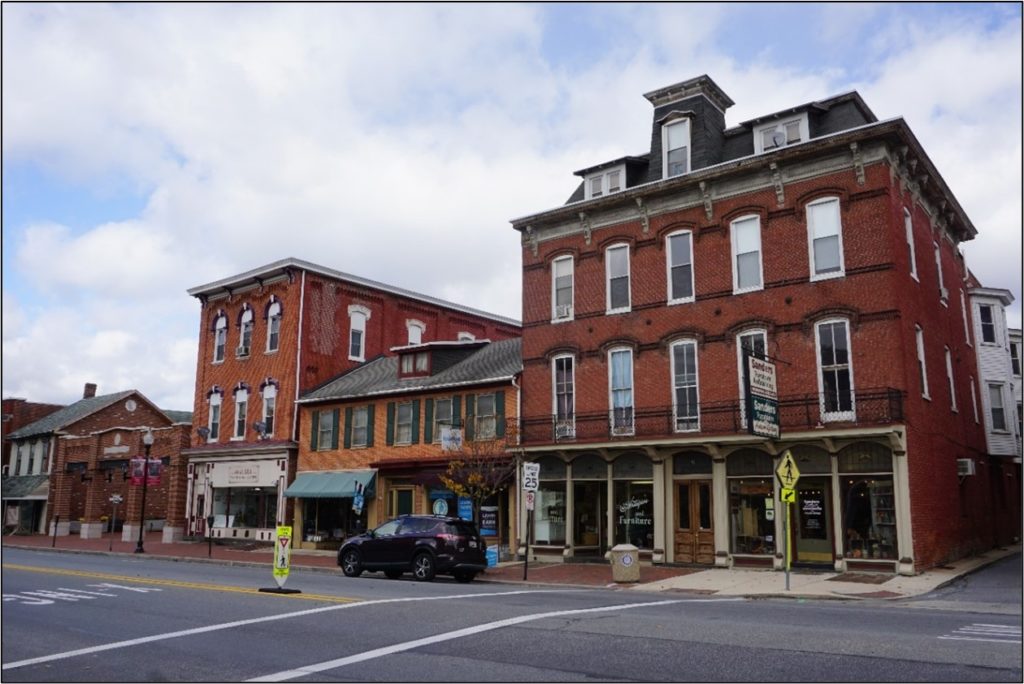
With its listing, Waynesboro joined other previously listed Franklin County downtown communities, such as Mercersburg (listed in 1978), Greencastle (listed in 1992), and Chambersburg (listed in 1982), which hosted the 2019 PA Statewide Conference on Heritage on the historic, and listed, campus at Wilson College (listed in 1995).
Ebbert Spring
Another resource not yet listed in the National Register is that of the Ebbert Spring archaeological site. Located at a high volume water source, artifacts discovered at Ebbert Spring tell a story of occupation in the valley by indigenous people dating back over 10,000 years.
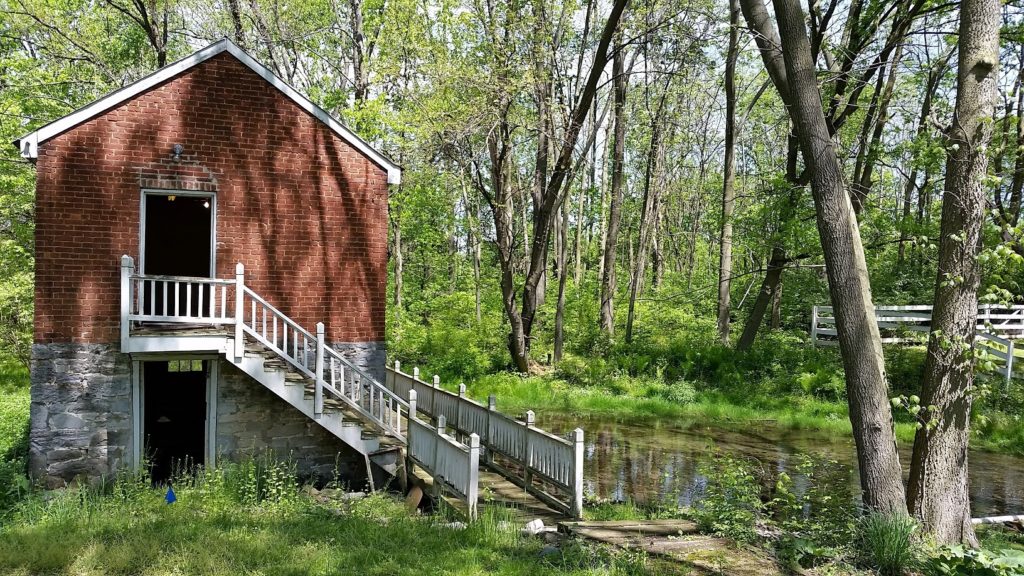
In 2019, the Archaeological Conservancy preserved and protected the site threatened by surrounding industrial development, as a “12 acre open space research preserve and heritage park.” Check out the State Museum of Pennsylvania’s blog for more details on Franklin County’s archaeological record.
To learn more about the unique and historic places in Franklin County, check out the Franklin County Visitors Bureau for additional info.
Comment Policy
PHMC welcomes and encourages topic-related comments on this blog. PHMC reserves the right to remove comments that in PHMC’s discretion do not follow participation guidelines.
Commenters and Comments shall be related to the blog post topic and respectful of others who use this site.
Commenters and Comments shall not: use language that is offensive, inflammatory or provocative (this includes, but is not limited to, using profanity, obscene, or vulgar comments); disparage other commenters or people; condone illegal activity; identify the location of known or suspected archeological sites; post personal information in comments such as addresses, phone numbers, e-mail addresses or other contact details, which may relate to you or other individuals; impersonate or falsely claim to represent a person or an organization; make any commercial endorsement or promotion of any product, service or publication.
If you would like to comment on other topics not related to this blog post but related to PHMC, please fill out the PHMC Contact Us Form.
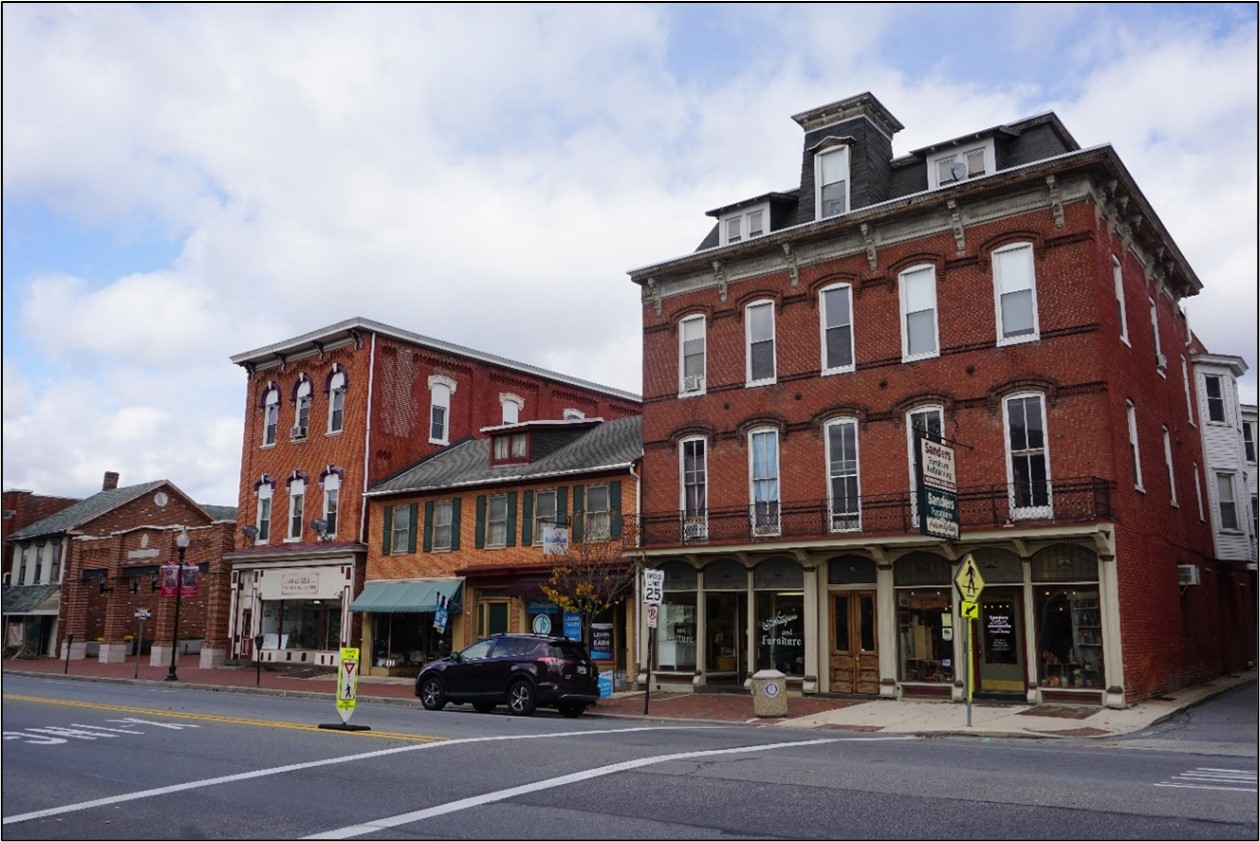
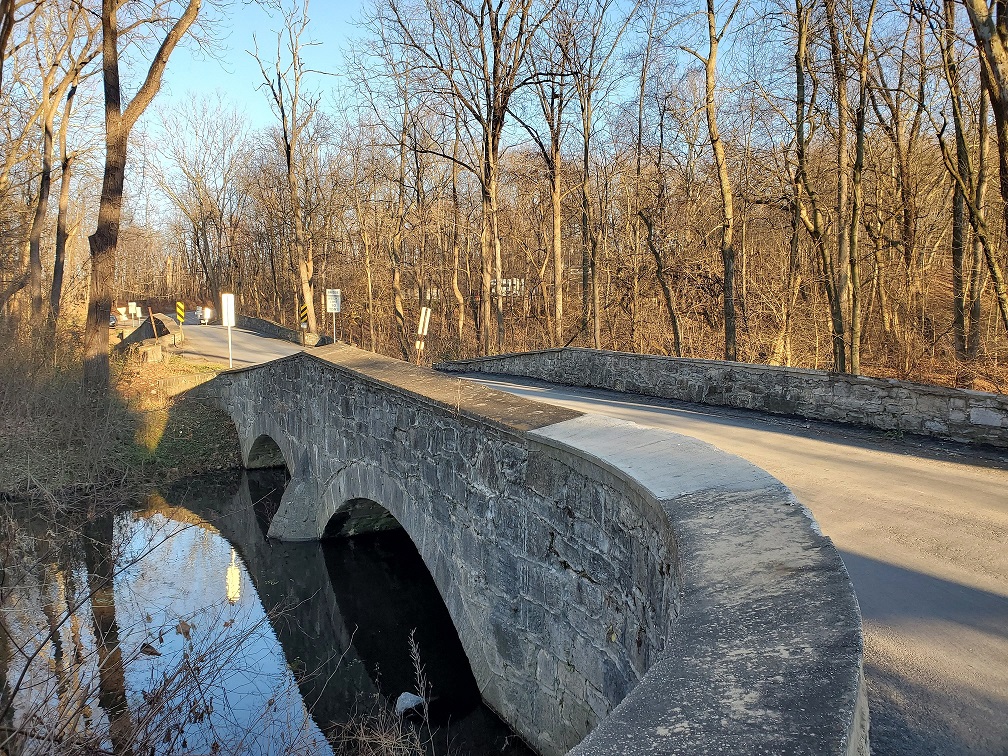
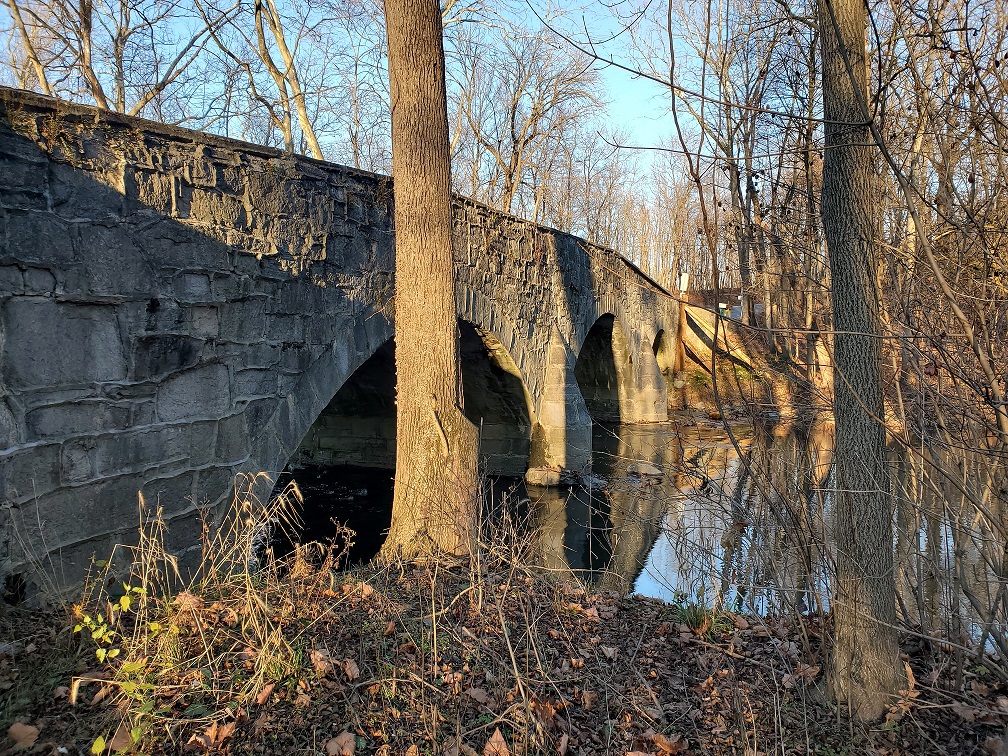
I spent a very pleasant mid-day at the Fort McCord plaque waiting for the sun to come around for the best exposure for photos I was taking for an article on historical markers that I wrote for Pennsylvania Heritage magazine. While I was waiting, I spoke with a gentleman farmer in a nearby beautifully-restored historic farmhouse, and on the other side of the road another farmer, who showed me around his property. I finally got some pictures, one of which appeared in the magazine. I’d like to go back and explore more of the area now!